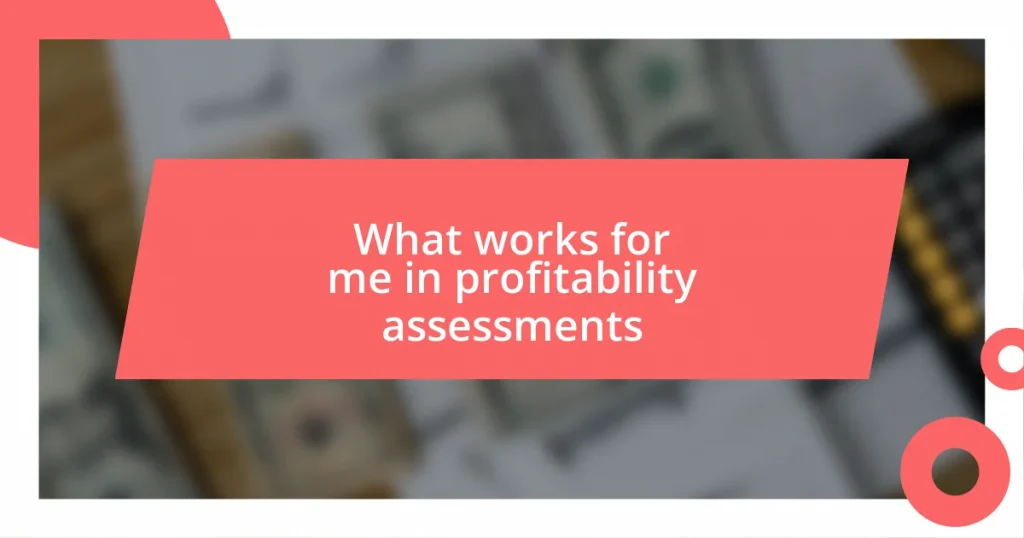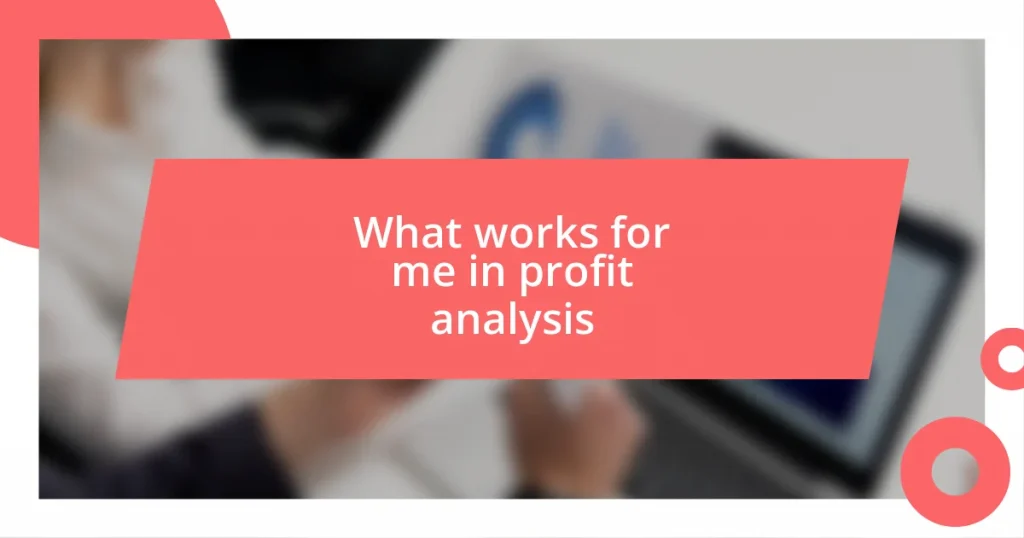Key takeaways:
- Understanding GDPR requires organizations to obtain explicit consent for data collection and prioritize data minimization to respect user privacy.
- Key compliance challenges include accurate data mapping, implementing data portability, and ongoing staff training to ensure understanding of GDPR principles.
- Documenting compliance efforts transforms the process into a continuous dialogue about accountability, user trust, and prioritizing data protection practices within the organization.

Understanding GDPR Basics
The General Data Protection Regulation (GDPR) is a cornerstone of privacy law in Europe, designed to empower individuals regarding their personal data. I still remember the first time I unearthed its complexities; it felt like diving into an intricate puzzle. Have you ever faced that overwhelming sensation when trying to grasp something essential yet daunting? That was me, grappling with terms like “data subject rights” and “processor obligations.”
One key principle of GDPR is the requirement for organizations to obtain explicit consent before collecting personal data. Early in my journey, I struggled to unpack what “explicit consent” really meant—was it just a checkbox? It’s so much more! It requires clear communication, allowing individuals to understand what they’re agreeing to, and who wouldn’t want that kind of transparency when it comes to their own data?
Moreover, GDPR emphasizes the importance of data minimization, meaning you should only collect what you genuinely need. I vividly recall a project where we had to rethink our data collection strategy. It was eye-opening! Asking ourselves, “Do we really need all this information?” led to profound changes, ensuring that we respected users’ privacy while streamlining our processes. It was a win-win situation—one I believe every organization should strive for.

Identifying Key Compliance Challenges
Identifying key compliance challenges under GDPR can feel like navigating a minefield. Early on, I encountered the challenge of ensuring accurate data mapping. I remember feeling overwhelmed while trying to trace every piece of personal data within our organization. It often felt like hunting for buried treasure, but instead, I discovered it required meticulous attention to detail. Understanding where data comes from and how it flows can help pinpoint potential vulnerabilities and areas of risk.
One significant hurdle was figuring out how to implement the right to data portability. It wasn’t just about ensuring users could take their data with them; it was about formatting that data in a usable way. I recall a stressful afternoon spent trying to extract user profiles into different formats, grappling with questions like, “Will our users find this data easy to understand?” This process reinforced the idea that compliance is not only about regulations but also about user experience.
Additionally, training staff to understand GDPR responsibilities was a challenge I hadn’t fully anticipated. I vividly remember conducting my first training session, feeling the pressure as I explained critical compliance elements. The blank stares from the team were a wake-up call! It struck me that aligning everyone on GDPR principles would take more than just a single lecture; it would become an ongoing dialogue.
| Compliance Challenge | Description |
|---|---|
| Data Mapping | Tracing personal data within the organization to identify potential vulnerabilities. |
| Data Portability | Ensuring users can access and transfer their data in a usable format. |
| Staff Training | Educating team members on GDPR principles and responsibilities for ongoing compliance. |

Assessing Data Processing Activities
Assessing data processing activities is a critical step toward GDPR compliance that cannot be overlooked. I remember sitting at my desk, poring over spreadsheets filled with data entries, feeling both anxious and determined. Each row represented not just numbers, but real individuals with their own stories and preferences. Understanding how and why we processed their data helped me realize the ethical responsibilities we carry as organizations.
To effectively assess data processing activities, I found it helpful to create a comprehensive inventory. This exercise unveiled insights I hadn’t anticipated, sparking discussions that shifted our data-handling perspectives. Here are some key points to consider:
- Identify Data Sources: Map out where personal data originates, including websites, surveys, or third-party providers.
- Determine Processing Purposes: Clarify why the data is being collected and how it will be used, helping align it with GDPR’s principles.
- Evaluate Data Sharing Practices: Assess if and how data is shared with third parties, ensuring compliance and transparency.
- Assess Retention Periods: Define how long data will be retained, ensuring it’s only kept as long as necessary for processing purposes.
- Ensure Security Measures: Review the existing measures in place to protect personal data against breaches or unauthorized access.
Taking these steps transformed my perspective on data processing, shifting it from merely a checklist to an ongoing ethical commitment. The discussions that followed with my team were invigorating, shifting our corporate culture toward one that prioritizes privacy and trust.

Implementing Data Protection Measures
One of the first data protection measures I implemented was the establishment of robust access controls. I distinctly remember the meeting with our IT team, where we sat around a conference table discussing who should have access to what data. It hit me hard when I realized how many team members were accessing sensitive information without proper justification. This led us to define roles clearly and restrict access based on necessity, aligning our practices with GDPR principles.
Another key measure involved regular audits of our data security protocols. During one of these audits, I was still haunted by a previous close call with a data breach. It became clear to me that these audits were not merely administrative tasks; they were vital safeguards for our users’ trust and confidentiality. As I meticulously checked each process, I kept asking myself, “Are we doing enough to protect our users?” This self-questioning was an essential part of fostering a culture of accountability within the team.
On top of this, I instituted ongoing training and awareness campaigns focusing on data protection. I recall creating a monthly newsletter that featured data protection tips and real-life scenarios showcasing the significance of compliance. Connecting these principles to our daily work not only made them more relatable but also created a sense of urgency and importance. The question that often came up during workshops was, “How do we make this a priority?” It reminded me that implementing data protection measures is not just about meeting a legal requirement; it’s about respecting the people behind the data.

Documenting GDPR Compliance Efforts
Documenting GDPR compliance efforts is, in my experience, not just a box-ticking exercise; it’s a narrative of our journey toward accountability. I remember crafting a detailed compliance report that outlined every step we took—from assessments to implementation. As I pieced together the timeline, it struck me how each entry was a testament to our commitment to protecting personal data, making me feel proud and reflective about our progress.
To ensure our documentation was both thorough and practical, I began using a project management tool dedicated to compliance tracking. It felt overwhelming at first, but breaking down each requirement into actionable items made the process more manageable. How could we expect our team to embrace compliance if we didn’t provide them a clear path? I still recall the first time I shared the dashboard with our staff; their eyes lit up, realizing they had a visible guide to their responsibilities.
One of the most impactful aspects of our documentation was the incorporation of feedback loops. After each compliance audit, I initiated team debriefings, which allowed us to discuss what went well and what needed improvement. This practice highlighted our ongoing commitment to growth and transparency. I often asked, “How can we do better while keeping our users’ trust at the forefront?” Understanding our documentation as a living document, rather than a static set of papers, transformed our perspective on compliance. It became a continuous dialogue about how we value privacy and respect our customers’ personal information.

Training Staff on GDPR Practices
Training staff on GDPR practices was one of the most rewarding challenges I faced. I vividly remember the first training session, where I stood in front of a room full of eager faces, ready to dive into the complexities of data protection. I realized then that this was more than just a training; it was an opportunity to empower my colleagues to fully grasp the weight of their responsibilities. Engaging them with real-world scenarios made the concepts resonate, and I could see the moment when the understanding clicked.
To reinforce their learning, I made it a point to incorporate interactive elements into our sessions. One particular exercise involved role-playing potential data breach situations, where each staff member had to think on their feet. Witnessing their reactions was eye-opening. I often found myself thinking, “What if they don’t know how to respond?” But as I saw them navigate through the challenges, it became clear that they were not just absorbing information—they were building the confidence to act responsibly.
Even after the initial training, I established an open-door policy for questions and discussions. It was important for me to create a culture where asking about data protection wasn’t seen as a nuisance but rather as part of our everyday work life. I distinctly recall a colleague approaching me after a meeting, visibly concerned about a process that didn’t align with GDPR principles. That moment reaffirmed my belief that continued dialogue is essential. “If they feel encouraged to speak up,” I mused, “we’re on the right path towards fostering a responsible data culture.” It was those little victories that reinforced our commitment to compliance and built a stronger team focus on data integrity.

Monitoring and Updating Compliance Strategies
Monitoring and updating compliance strategies isn’t just about ticking boxes; it’s a dynamic process that demands attention and adaptability. I recall an instance when we implemented a quarterly review of our compliance measures. At first, it felt like just another meeting on the calendar, but as I sat down with the team, discussing our findings and insights, I realized how vital this practice was. It provided a fresh lens on our strategies—everyone contributed ideas while reflecting on what worked and what didn’t. How could we potentially miss gaps without this collective brainstorming?
Regular engagement with both internal and external changes in regulations played a pivotal role in our compliance journey. I remember when a new data protection provision was introduced, and I immediately called for an emergency team meeting. In that moment, we didn’t just scramble to adapt; we dove deep into discussions about its implications for our practices. It was invigorating to see how quickly we all rallied together to update our approach, and I felt that sense of teamwork solidify in a profound way. It leaves one pondering, “What more can we do to stay ahead?”
Moreover, I found that incorporating technology into our compliance monitoring was a game changer. Utilizing data analytics tools allowed me to pinpoint areas needing immediate attention. I still think back to the time when our analytics reported a spike in data access requests—what an eye-opener that was! It prompted not just a review of our processes, but an opportunity to engage with the data subject rights and ensure we were not just compliant but also respectful of individual privacy. Such instances highlight the importance of staying proactive rather than reactive, making compliance feel more like a collaborative culture rather than a burden hanging over us. How empowering it felt to transform those challenges into stepping stones!















